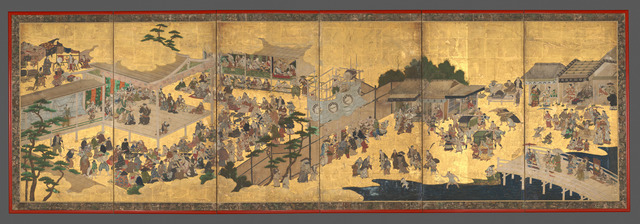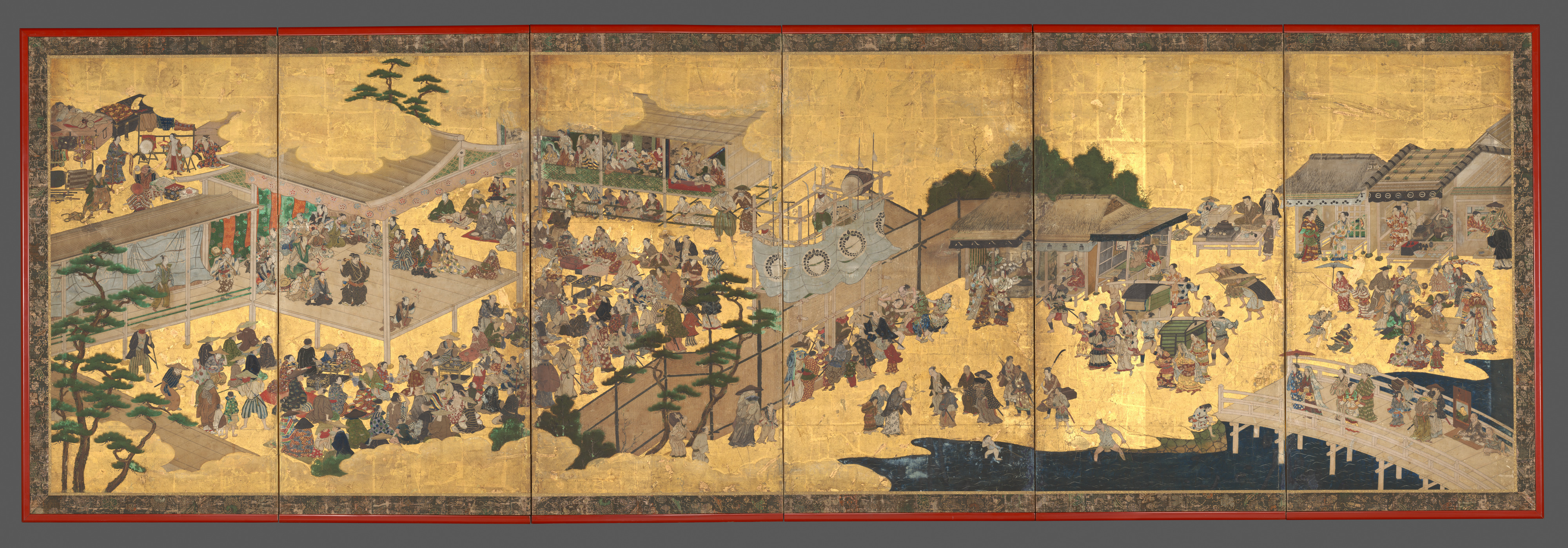Entry by Eric Diaz: Women’s Kabukia

Full description
This painting from the mid to late 1610s portrays a young female actress dressed as a samurai along with her sidekick and manservant Saruwaka, who is also played by a female actress (Young Monkey) to the left side on the stage. They are performing a Kabuki skit called Chaya Asobi, which can be translated to, “Teahouse Entertainments.” What was interesting about this portrait to me was the fact that female actors were portraying characters knowing that during this period they were not allowed to act in kabuki theater plays/skits. This portrait was earlier on in the kabuki period and what I learned was toward the beginning of kabuki theater it was portrayed by female dancers or prostitutes playing all characters in sexual skits. In fact, Kabuki can be translated to sing, dance, and skill, so some people call it “the art of singing and dancing” though it is to some degree inaccurate. It was in later Kabuki that women were banned from portraying characters on stage. That law came around 1629 and was not appealed until 1888 in Japan. Still to this day, you will not see a lot of female actresses in kabuki theater.
Author: Eric Diaz
Comments
to view and add comments.
Annotations
No one has annotated a text with this resource yet.
- typeImage
- created on
- file formatjpeg
- file size3 MB
- creatorStudio of Kano Takanobu
- rightsPublic Domain
- rights holderThe Metropolitan Museum of Art


